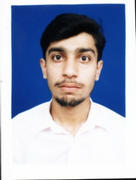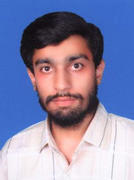WELCOME TO BANNU CITY HOME PAGE
HISTROY OF BANNU CITY
BANNU CITY SURANI
(1500 BC-1947 AD)
This is a brief of history of Bannu prepared and presented to BANNU.COM by Jahangir Khan Sikandri from the English version of his book ‘Tarikhe Aqwame Bannu’ (History of the Tribes of Bannu). The original text of his research work is contained in a huge volume of publication (four volumes) which contains the detailed timeline authentic history narrating all events that occurred on the soil of Bannu and the history and pedigree tables of all villages of Bannu (386 villages, 1800 families’ pedigree tables). Here, only a few important events have been narrated by him for the general knowledge of the reader. The website administrators are thankful to him for the provision of this brief.
Introduction
The history of Bannu runs parallel to the history of Gandhara. Nothing is more clearly known about it in the Bronze Age and earlier. However, a recent archaeologists’ research on the fossils at different sites reveals that cavemen had lived here more than half a million years ago. Many writers have written a vague history which is neither authentic nor informative.
The Clans and Sub-clans of Bannuchis
There are 120 sub-clans of the Bannuchis (including the generations of Shittak). Total numbers of villages are 386 in Bannu which include the villages of Marwats and Wazirs as well. Bannuchis are descendant from one Shittak (or Shithak), a son of Karan who was the fifth son (probably an adopted one) of Kais bin Abdur Rashid. The generations of his (Karan) other sons are the Afridis, Mehmands, Khattkas, Masuds, Wazir, Bangash and Dilazaks etc. Shithak was born in the era of Mehmud of Ghazna and lived at Shawal. His seventh or eighth generations had forcibly occupied Bannu in 1285 AD; the story of whom has been given in the succeeding paragraphs.
Explanation of the Word 'Bannuchi' (or Bannusi)
Except Marwats and Wazirs, other families including the generations of the sons of Shithak that occupied Bannu, are called Bannuchi (Bannusi) irrespective of their race, religion and caste. The word Bannuchi does not apply to any particular tribe living in Bannu now, even not to the generations of Shithak. During the Ghorids, Temurids and Mughals period, this name only applied to the Kivis, Surranis, Zelum and Haved, the sons of Bano, the first wife of Shithak. Shithak was the son of Karran, in the fifth lineage from Qais bin Abdur Rashid. In other words, the term Bannuchi means 'A settled person from Bannu, except Marwats and Wazirs'. Bannuchis are divided into six categories;
Native Afghan Bannuchis
This name is used for the generations of the sons of Shithak i.e. Haved, Zelum, Surrani and Kivis. They are known so since they had originally possessed this land in 1285 AD. They are about 40 % of the total population of Bannuchis.
Colonized Afghan Bannuchis
This name applies to those Afghans who subsequently settled in Bannu with the Native Afghan Bannuchis. They are about 3 % of the total population in Bannu.
Native Saddat Bannuchis
This name applies only to the saddats of Sheikhan, the descendants from Sheikh Shah Mohammad Rohani who assisted the Native Afghan Bannuchis during their efforts to subdue the valley of Bannu , in 1285 AD. They are about 10 % of the total population of Bannuchis.
Colonized Saddat Bannuchis
This name applies to those saddat families who subsequently settled in Bannu with Native Afghan Bannuchis or Native Saddat Bannuchis. They are about 7 % of the total population of Bannuchis and scattered through in almost all the Bannuchis’ villages.
Khidmatgar Bannuchis
This name applies to those persons who settled in different villages of Bannu as tradesmen and farm-labourers. Major inflow of such persons had been from Punjab during the Durrani and Sikh periods. Some among them settled here during the British era too. They are about 36 % of the total population of Bannuchis, scattered through out in almost all the Bannuchis’ villages.
Ordinary OR Domiciled Bannuchis
This name applies to those people who are not from any of the above mentioned categories but they were settled in Bannu in different periods. For example, the third generation of the mahajirs from India are now called Domiciled Bannuchis. Non Muslims or non Pashtoons also fall in this category. They were initially settled in Bannu city during the British era and subsequently purchased some land in different villages too. They are about 4 % of the total population of Bannuchis.
The Clans and Sub-clans of Bannuchis
There are 120 sub-clans of the Bannuchis (including the generations of Shittak). Total numbers of villages are 386 in Bannu which include the villages of Marwats and Wazirs as well. Bannuchis are descendant from one Shittak (or Shithak), a son of Karan who was the fifth son (probably an adopted one) of Kais bin Abdur Rashid. The generations of his (Karan) other sons are the Afridis, Mehmands, Khattkas, Masuds, Wazir, Bangash and Dilazaks etc. Shithak was born in the era of Mehmud of Ghazna and lived at Shawal. His seventh or eighth generations had forcibly occupied Bannu in 1285 AD; the story of whom has been given in the succeeding paragraphs.
Explanation of the Word 'Bannuchi' (or Bannusi)
Except Marwats and Wazirs, other families including the generations of the sons of Shithak that occupied Bannu, are called Bannuchi (Bannusi) irrespective of their race, religion and caste. The word Bannuchi does not apply to any particular tribe living in Bannu now, even not to the generations of Shithak. During the Ghorids, Temurids and Mughals period, this name only applied to the Kivis, Surranis, Zelum and Haved, the sons of Bano, the first wife of Shithak. Shithak was the son of Karran, in the fifth lineage from Qais bin Abdur Rashid. In other words, the term Bannuchi means 'A settled person from Bannu, except Marwats and Wazirs'. Bannuchis are divided into six categories;
Native Afghan Bannuchis
This name is used for the generations of the sons of Shithak i.e. Haved, Zelum, Surrani and Kivis. They are known so since they had originally possessed this land in 1285 AD. They are about 40 % of the total population of Bannuchis.
Colonized Afghan Bannuchis
This name applies to those Afghans who subsequently settled in Bannu with the Native Afghan Bannuchis. They are about 3 % of the total population in Bannu.
Native Saddat Bannuchis
This name applies only to the saddats of Sheikhan, the descendants from Sheikh Shah Mohammad Rohani who assisted the Native Afghan Bannuchis during their efforts to subdue the valley of Bannu , in 1285 AD. They are about 10 % of the total population of Bannuchis.
Colonized Saddat Bannuchis
This name applies to those saddat families who subsequently settled in Bannu with Native Afghan Bannuchis or Native Saddat Bannuchis. They are about 7 % of the total population of Bannuchis and scattered through in almost all the Bannuchis’ villages.
Khidmatgar Bannuchis
This name applies to those persons who settled in different villages of Bannu as tradesmen and farm-labourers. Major inflow of such persons had been from Punjab during the Durrani and Sikh periods. Some among them settled here during the British era too. They are about 36 % of the total population of Bannuchis, scattered through out in almost all the Bannuchis’ villages.
Ordinary OR Domiciled Bannuchis
This name applies to those people who are not from any of the above mentioned categories but they were settled in Bannu in different periods. For example, the third generation of the mahajirs from India are now called Domiciled Bannuchis. Non Muslims or non Pashtoons also fall in this category. They were initially settled in Bannu city during the British era and subsequently purchased some land in different villages too. They are about 4 % of the total population of Bannuchis.

